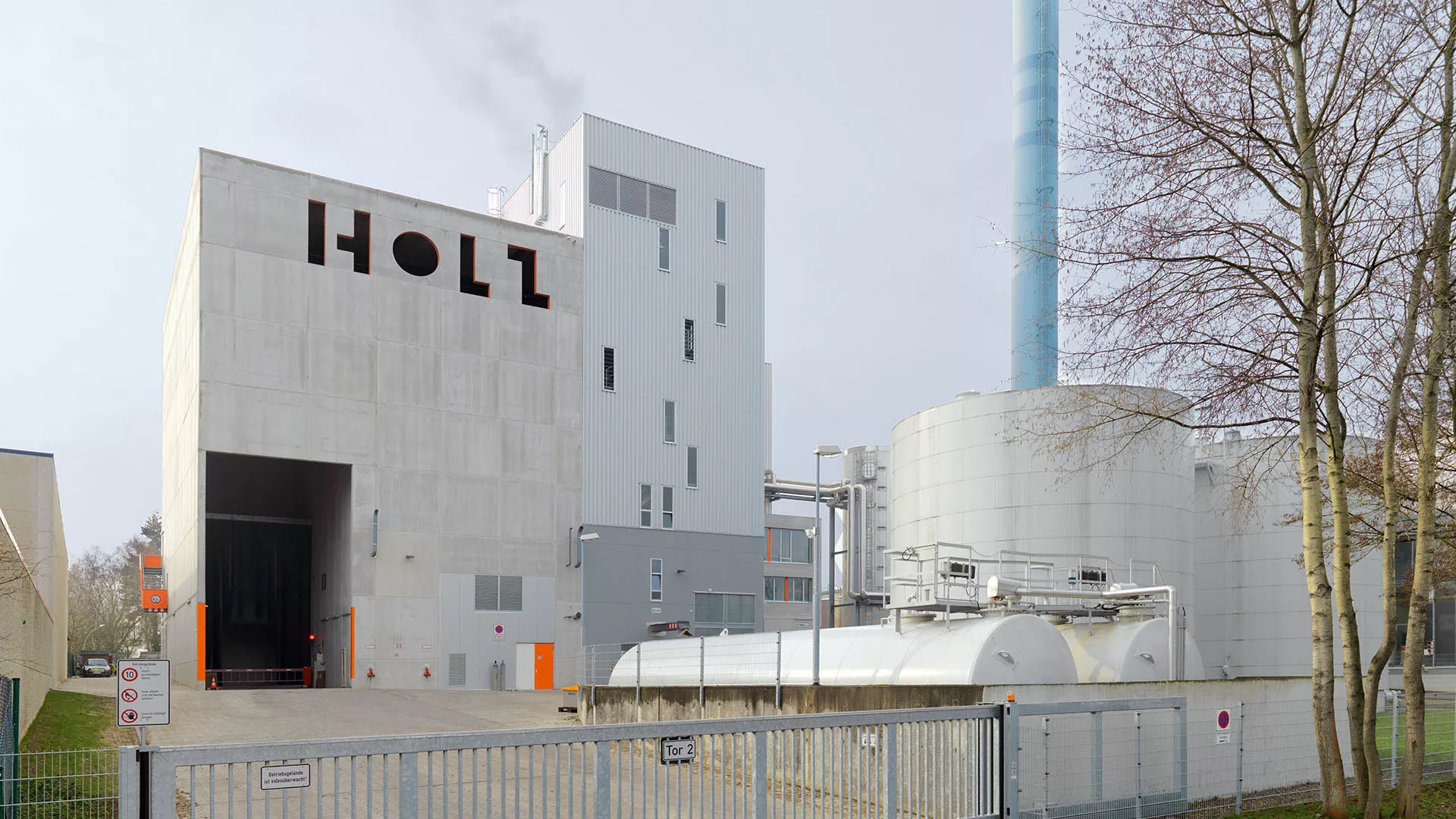
Automated cranes for wood-fired cogeneration power stations
Wood-fired cogeneration power station in HH-Lohbrügge
Clean energy to benefit the environment
Wood-fired cogeneration power stations offering combined heating and power generation play an important role in climate protection. Fully automated Demag crane installations ensure that solid fuel is stored and supplied to the wood firing system to meet demand.
- Reliable operation of the installation 24/7
- Space-saving solution thanks to storage in bunkers
- Clean supply system without any emissions
- Automated blending operations ensure homogenous incineration rates
The power station in Hamburg-Lohbrügge
Facility concept shows the way
The use of scrap wood not only produces clean energy, but also offers high efficiency: CO2 emissions are reduced and stocks of fossil fuels are spared. An example for such ecological and economical system solutions is the wood-fired cogeneration power station in Hamburg-Lohbrügge, which generates some 13 million kilowatt hours of electricity from renewable resources every year. Only natural woodchips from forestry and landscaping work are used. The heat generated at the same time – some 60,000 MWh – is delivered to a neighboring district heating plant, which supplies more than 8,000 households. Combined heating and power generation provide the best possible use of the energy contained in wood solid fuel – with a utilization factor of 85%.
The owner, KWA Bioenergie GmbH und Co. Kraftwerk Lohbrügge KG, invested a total of EUR 13 million in the construction of the wood-fired cogeneration power station in Hamburg. The installation, which was designed by Schuler Consulting Engineers based in Bietigheim-Bissingen, cuts annual carbon dioxide output by some 23,000 tonnes.
At a second power station in Ludwigsburg that was designed by Schuler, a Demag process crane also ensures that the material is stored and the fuel is supplied efficiently and reliably.
Automated crane solution
Focus on automation
Dedicated crane technology plays a key role in the process at the wood-fired cogeneration power station in Hamburg Lohbrügge (HHKW). The automated solution ensures availability of the installation and achieves maximum efficiency while retaining flexibility.
The fully automated double-girder overhead traveling crane is precisely controlled by the Demag warehouse management computer (WMC). The tasks performed by the process crane include:
- Rapid clearance of the tipping positions
- Storage of the fuel materials in three pre-defined storage zones
- Supply of the wood-fired incineration system with the corresponding blend of fuel
Crane data at a glance:
- Load capacity: 11 t
- Span: 16,400 mm
- Lifting height: 24,500 mm
- Variable long/cross-travel and lifting speeds: 50 / 40 / 50 m/min.
- Multi-jaw grab: 8 m³ capacity
The motor-driven multi-jaw grab is specially designed for handling wood, since the material is delivered to the facility in its natural state. The unit reliably picks up loads ranging from finely shredded wood to small branches and compacted material.
At least 140 m³ of material has to be handled per hour. The tipping pit needs to be cleared quickly to avoid lengthy waiting times for incoming trucks and any bottlenecks.
A clean solution
The wood-fired cogeneration power stations with their integrated silos were planned to achieve optimum utilization of the space. For this reason, the solution with automatic cranes was given preference over stores served by wheel-loaders, for example. This alternative would not only have caused more exhaust fumes and higher noise emissions, but would also have required more staff to operate the store.
Processes
Safe and reliable load handling in the supply process
Some 32,000 tonnes of woodchips are supplied to the wood-fired cogeneration power station in Hamburg every year. Access to the 300 m³ tipping pit is controlled by means of an integrated magnetic card scanning system. As soon as a truck has passed through the weighing station, the barrier is opened and the area above the tipping position is blocked for any crane operation to prevent damage to the grab caused by falling material. As soon as the truck has deposited its load, the crane receives the command to start clearing the tipping pit. In advance, staff at the installation check the quality of the incoming material and assign it to one of three previously defined fuel grades, which are specified according to the three storage zones. The automatic crane stores the solid fuel in the wood silo by types.
Any sway resulting from the crane long and cross-travel motions is eliminated by the Demag active load-sway damping system. This ensures safe operation, since any collisions by the grab against the walls are avoided.
Fill level monitoring in the silo
Besides the store, which has a capacity of 900 m³, there is also a silo for approximately 700 m³ of fuel. From here, the fuel is transported to the furnace by a sliding section. The fill level in the silo is monitored by fixed sensors. As soon as the minimum fill level is reached, the control system of the automatic crane ensures that the silo is replenished with the required quantity of fuel.
Blending and storage strategies
In addition to its actual transport duties, the process crane is also responsible for blending the materials. This needs to be done, for example, if quality assurance reveals that wood cuttings resulting from landscaping work are too wet or do not meet the minimum heating efficiency requirements and, therefore, they have to be blended with high-quality wood from forest sources. As soon as the required blending ratio has been set via the user interface of the Demag WMS, the crane automatically approaches the three corresponding zones, picks up the material and blends it in the silo.
Further strategies were included in the control system by the crane supplier. For example, when the grab buries itself in the material to pick up a load, the grab jaws are not initially fully closed. The crane takes the strain and a small amount of material trickles out. The grab can then be closed with the optimum fill level.









